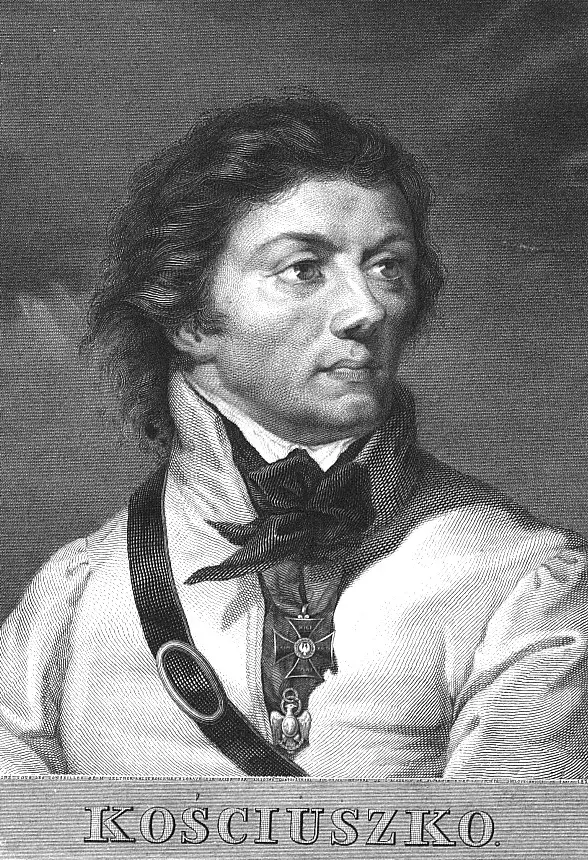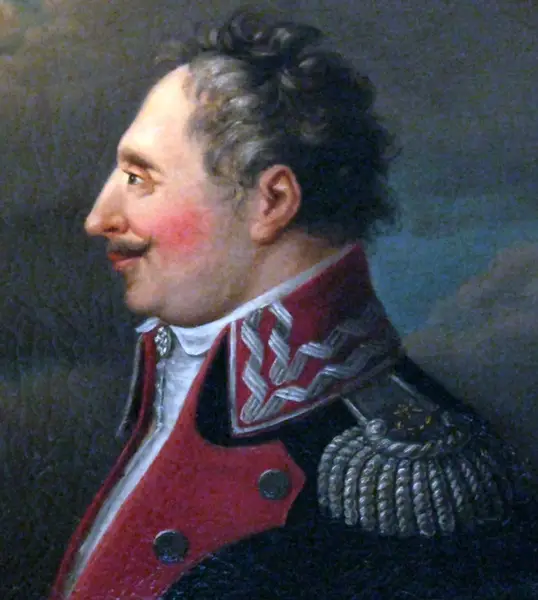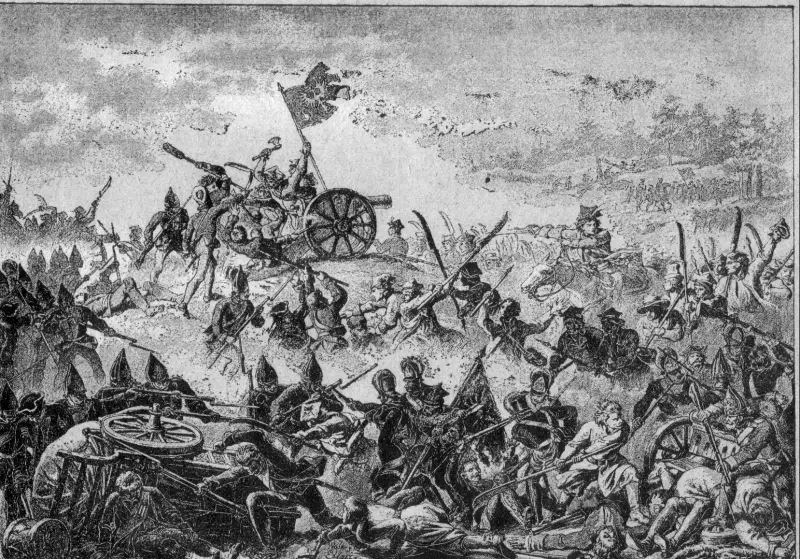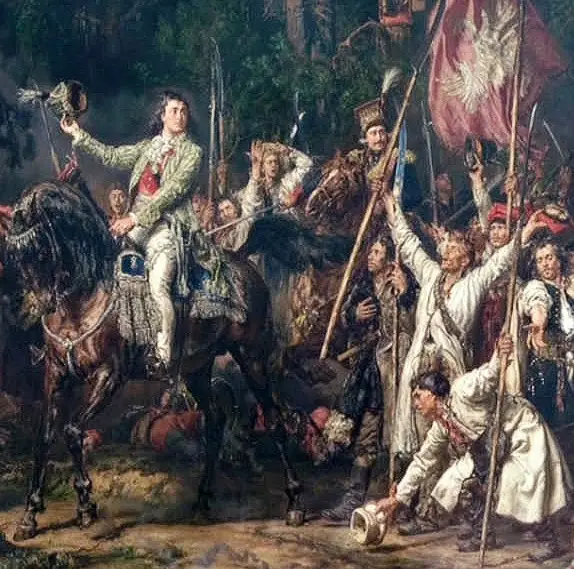How Kosciuszko became a national hero of Poland

Jan Matejko. "Battle of Raczawitz"
General situation
The Russian government was satisfied with the Second Partition of the Polish-Lithuanian Commonwealth (How the lords rejected an alliance with Russia and caused the Second Partition of the Polish-Lithuanian Commonwealth). Empress Catherine II hoped that calm and order would be established in the remaining part of the Polish kingdom.
Taking into account the military-political situation, Russia was not interested in the complete elimination of Polish statehood. It was beneficial for the Russian Empire to maintain a relatively weak and loyal Polish state, which was ensured by the dominance of the so-called. pro-Russian party in Poland. Weak Poland was no longer a threat to Russia and was a buffer from Prussia and Austria. Naturally, the strengthening of Berlin and Vienna at the expense of the most populous and economically developed western regions of Poland did not suit St. Petersburg.
Petersburg at this time had an important goal - Constantinople and the straits (Bosporus and Dardanelles). Russia under Catherine the Great was solving a centuries-old strategic task - to once again become the master of the Black (Russian) Sea.
Back in December 1791, Catherine told her secretary Khrapovitsky that St. Petersburg needed “free hands.” In 1792, Russia received such freedom: in the summer, Prussian and Austrian armies invaded French territory. Western Europe entered a period of revolutionary wars. At that time, revolutionary France attracted all the attention, forces and resources of the leading powers. Russia could calmly solve its problems.
Unfortunately, Catherine II will not have time to realize this goal; Pavel Petrovich, who will challenge England, will be killed. And under Alexander Pavlovich, Russia will plunge headlong into Western European problems (mainly German ones), instead of solving national problems.
At the end of 1792 - beginning of 1793, Russia begins preparations for the Bosphorus operation. From the Baltic fleet More than 2 thousand officers and sailors are transferred to Chernomorsky. 50 gunboats and 72 rowing vessels are laid down in Kherson and Nikolaev. At the beginning of 1793, the new commander-in-chief Alexander Suvorov arrived in Kherson. Petersburg publicly develops activities to combat the Jacobins, but in reality concentrates its best forces in the southern direction. The opening of navigation was to be the beginning of the operation to capture the straits. Ushakov and Suvorov are waiting for orders. Russia was close to taking possession of Constantinople, Hagia Sophia, and the Strait Zone, turning the Black Sea into a “Russian lake.”
However, these plans were not destined to come true. By definition, there could be no peace in the Poland of that time. Rich gentlemen organized balls, masquerades, feasts and hunts and at the same time moaned about the “disasters of the fatherland,” which they had robbed twice. Moreover, almost all the hatred was directed against Russia, although the Russians did not take a single city or village that belonged to ethnic Poles. Russia was to blame for all of Poland's troubles.

General Tadeusz Kosciuszko, painting by Benjamin West, 1797
National hero
Part of the Polish gentry began to secretly prepare an uprising, hoping for help from France. Among these lords were General Dzyalynsky, Brigadier General Madalinsky, Elsky and others. They were also joined by rather shady personalities like the merchant Kopotas, who, together with the Jew Mazing, owned a large banking office and bought himself a nobility. Another of these dark personalities was the “shoemaker” Kilinski, who enjoyed great success among the ladies of Warsaw.
The banner of the uprising was General Tadeusz Kosciuszko.
He was born on February 4, 1746 and belonged to a poor old noble family of Western Russian origin. Kosciuszko studied at the Knight's School in Warsaw (kind of like a military academy), where officers were trained. Kosciuszko stood out among his peers for his asceticism, will and determination and was reminiscent of the Swedish king Charles XII. That's why he was nicknamed "Swede". He chose the specialty of military engineer and graduated from this school with the rank of captain.
For his excellent studies, he received a royal scholarship and was sent to Paris to study at the military academy. There he was more influenced by the ideas of the French enlighteners. At the same time, Kosciuszko studied painting and took architecture lessons. The talented young man did not find a place for himself in his homeland: an officer’s position at that time could only be bought for a large sum, and Kosciuszko had no money. His family got into debt and could not help. This fact perfectly characterizes Polish reality. One of the most gifted young people in Poland turned out to be unnecessary in his homeland.
In 1776, Tadeusz went to America, where he joined the American army and was involved in the fortification of cities and military camps. The defense of Ticonderoga and the Battle of Saratoga brought him wide fame. Tadeusz did an excellent job of building fortifications to defend Philadelphia and became the chief engineer of the Army of the North, which defended the Canadian and New York lines of operations.
The commander of the Northern Army, Horatio Gates, praised Kosciuszko's skills: "The great tactics of the battle on this occasion were the hills and forests, which a certain young Polish engineer, thanks to his skill, had chosen for my position."
In March 1778, Kosciuszko arrived at New York's West Point, where he spent more than two years strengthening fortifications. Then he transferred to the Southern Army, where he was also the chief military engineer and distinguished himself in a number of battles. His work was especially noticed during the so-called. The Race to Dunn's River, when British General Cornwallis pursued Greene's army 320 miles across wilderness in January-February 1781. Largely thanks to the tactics of Greene, bateau (flat-bottomed boats) Kosciuszko and accurate reconnaissance of the rivers before the main crossing, the Continental Army crossed all water obstacles without much loss and was able to avoid defeat. The British had to retreat.
As a result, the Americans were able to achieve an advantage in the south, which they maintained until the end of the war. As recognition of Kosciuszko's services, the US Congress in October 1783 awarded him the rank of brigadier general in the American army. Congress granted him American citizenship. Kosciuszko became one of three foreign officers admitted to the Order of Cincinnatus, which included the most famous participants in the War of Independence. George Washington awarded him a pair of pistols, which were engraved with the inscription Ex pluribus unum (“Out of many to one”).
In 1784, Kosciuszko left the United States and returned to the Polish-Lithuanian Commonwealth. Due to a conflict between his patrons, the Czartoryski family, and King Stanisław August, he was again unable to obtain a place in the Polish army. During the Four Years' Diet (1787–1791), he proposed creating a militia based on the American model.
Kosciuszko was a supporter of the liberalization of the kingdom, in particular, peasants and Uniates should receive all civil rights in order to be full citizens and defend their homeland.
In 1789, on the recommendation of the Brest sejmik, he was elevated to the rank of major general and appointed to the crown army. He commanded troops in the Volyn region, was deputy commander of the division of Prince Yu. Poniatovsky, the king’s nephew. Kosciuszko supported the Constitution of 1791, but was in favor of continuing reforms. Later, having received almost dictatorial powers as the leader of the uprising, he wrote to Józef Pawlikowski: “I will not fight for the gentry alone, I want the freedom of the entire nation and only for it will I sacrifice my life.”
During the war of 1792, Kosciuszko became the commander of one of the three divisions that made up the army of the Polish-Lithuanian Commonwealth under the command of J. Poniatowski. The general opposed retreat, proposing to concentrate troops in the most important directions and defeat the Russian corps piecemeal. However, the high command rejected his ideas. Kosciuszko's division fought hard, he skillfully used the rugged terrain and field fortifications and thereby earned the reputation of one of the most gifted commanders in Poland. After the Battle of Dubenka, the king promoted Kosciuszko to the rank of lieutenant general and awarded him the Order of the White Eagle.
After the victory of the Targowitz Confederation and the Russian Army, Kościuszko fled to Saxony and then to France, where he unsuccessfully tried to involve the French in the war with Prussia and Russia. The French could only promise money and help to Turkey in the event of an uprising.

Kosciuszko with the Order of Military Valor (Virtuti Militari) and the badge of the Order of Cincinnati. Hood. Anthony Oleschinsky
The beginning of the uprising
In the absence of other capable Polish generals, Kosciuszko became a national hero. Returning from France to Saxony and moving to Galicia, he became involved in preparing the uprising. He was appointed "dictator".
The position of the rebels was eased by the weakness of the Russian command in Poland. At the beginning of 1794, Russian troops in Warsaw were led by Lieutenant General Baron Osip Igelstrom. A native of German nobles, Igelstrom was a good servant, but did not have the ability to act independently and did not understand Polish affairs. In addition, the elderly baron fell in love with one of the first beauties of Warsaw, Countess Załuska, and became a plaything in the hands of a Polish noblewoman. True, the countess did not suffer from an excess of patriotism and used the general to solve only her own problems. She even warned him about a conspiracy, rumors of which were circulating in society.
But the general did not believe in the conspiracy and decided that it was women’s gossip. But just in case, he doubled the guard and ordered the arrest of the most suspicious Poles. However, the majority escaped successfully. Igelstrom also asked St. Petersburg for reinforcements, just in case. Catherine believed that rumors of danger were exaggerated and there were enough troops.
The Grodno Sejm disbanded a significant part of the Polish army. Some regiments were completely disbanded, others were significantly reduced in number. Officers and soldiers became a source of local outrage. General Anthony Madalinski refused to obey the decision of the Grodno Sejm and disband his Wielkopolska brigade of national cavalry.
On March 12, Madalinsky moved out at the head of a brigade from Ostroleka, crossed the Prussian border and captured the city of Soldau. The cash allowances of the Prussian army were kept there. Having seized the money, Madalinsky again moved to Poland and decided to capture Krakow. Along the way, the general captured city and public funds.

Anthony Józef Madalinski (1739–1805) – military statesman of the Polish-Lithuanian Commonwealth, deputy of the Four-Year Sejm, Polish general, who in 1794 was the first to rebel against the Russian and Prussian authorities.
Battle of Raclawice
Having learned about the arrests of the conspirators and the performance of the Madalinsky brigade, Kosciuszko decided to start an uprising, although he believed that it was not yet ready, and hurried to Krakow. Colonel Lykoshin, who commanded the Russian garrison in Krakow, decided that it was pointless to take on a battle in a hostile environment, and withdrew his detachment from the city.
In the Krakow church, the leaders of the uprising solemnly blessed their sabers. On March 16, 1794, the inhabitants of Krakow proclaimed Kosciuszko dictator of the republic. The Act of Uprising was announced in Krakow. Kosciuszko called on the people to “hurry with weapons under the banner of the motherland "and donate money, horses, supplies and other property.
General Igelstrom sent a 5-strong detachment under the command of Alexander Tormasov to suppress the rebellion. Kosciuszko had about the same number of men, almost half of them were cosigners (peasants armed with converted scythes). Kosciuszko, who had gained extensive experience in the American War of Independence, took a strong position near the village of Racławice in the Lesser Poland Voivodeship. The Polish soldiers dug in well.

Battle of Raclawice. Rice. Michal Stakhovich
On the morning of April 4, 1794, General Tormasov attacked the Poles. While Russian soldiers unsuccessfully stormed the Polish positions, detachments of cosigners, under the personal leadership of Kosciuszko, secretly bypassed the Russian detachment and penetrated its rear. As a result of this attack, the Poles captured all 18 guns (according to other sources - 12) of Tormasov's detachment.
Tormasov’s detachment, which found itself between two fires, retreated. Kosciuszko did not have the strength to pursue, so his victory had more moral significance than military significance (both detachments lost about 500 people). After the defeat, Russian troops calmly continued operations in the Lesser Poland Voivodeship.
The victory raised the morale of the uprising and became a signal for all of Poland. Young people began to flock to Kosciuszko in droves. Most of the Polish lands rebelled. The revolt engulfed Lithuania and Courland, and the Warsaw Uprising began. There was also an uprising in Vilna.

Kościuszko and cosigners near Racławice. Fragment of a painting by J. Matejko
To be continued ...
Information